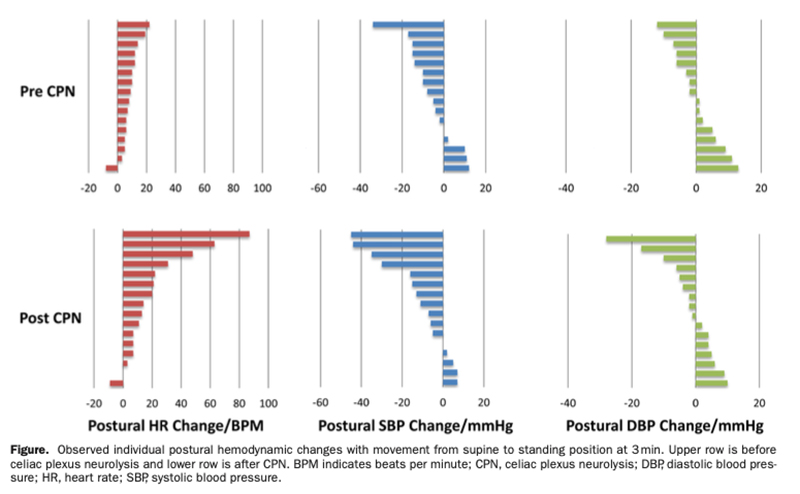Celiac plexus neurolysis has been associated with orthostatic hypotension but has not been quantified prospectively or evaluated for persistence after the immediate postprocedural period. Our objective was to quantify persistent hemodynamic changes induced by celiac plexus neurolysis. In this case series of 16 patients with cancer, 8 (50%) had orthostatic hypotension alone, 3 (18.75%) developed an exaggerated postural heart rate increase (>30 beats per min), and 1 (6.25%) had both orthostatic hypotension and an increased heart rate. While the analgesic benefit of celiac plexus neurolysis is clear, the observed hemodynamic changes may be poorly tolerated in some individuals.
